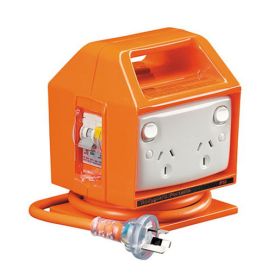Guide to Selecting the Right Clipsal MCB for Your Electrical System

Selecting the right Clipsal MCB for your electrical system is crucial to prevent electrical hazards. Installing MCBs offers numerous advantages, making them an essential safety measure for both corporate buildings and homes. In this article, you will learn the important factors to consider while selecting an MCB for your system.
Factors to Consider to Select the Right Clipsal MCB
If you want to choose the right Clipsal MCB, you need to check the specifications of this device. Here are some key factors you need to consider to select the right MCB.
1. Voltage Rate
The voltage rating is crucial in selecting the appropriate MCB. This voltage rate indicates which MCB will be appropriate for which type of circuit.
2. Current Rate
Calculate the maximum current rate each circuit would draw under normal operating conditions. This information will help you understand the ampere rating required for the MCBs.
3. Tripping Characteristic
This characteristic explains the relationship between the tripping time and current flow. An MCB has different tripping ranges. Therefore, before buying one check the tripping class to make sure that it is efficient for your electrical system. An MCB is divided into three tripping characteristics, they are:
- Type B – It is suitable for household distribution systems, protecting household appliances and personal safety.
- Type C – It is suitable for protecting distribution lines, lighting lines and motor circuits with high connecting current.
- Type D – It is useful for protecting equipment of high impulse current, such as a transformer, solenoid valve, etc.
- Type K – It is perfect for heavy-duty load devices such as compressors, winding motors, and X-ray machines.
- Type Z – It is for devices that are more delicate to tripping like semiconductors.
4. Number of Poles
Clipsal MCBs are available in different configurations, with single-pole, double-pole, three-pole, and four-pole options. The number of poles indicates the number of conductors a Clipsal MCB can disconnect when tripped. For most residential applications, single-pole MCBs are adequate, as they protect individual circuits. However, in commercial or industrial settings that are common for three-phase power distribution, three-pole or four-pole MCBs are perfect.
5. Breaking Capacity
Short circuits can produce an immense surge of current that can quickly damage electrical equipment and pose significant safety risks. To mitigate these risks, MCBs are designed with specific short-circuit breaking capacities, measured in kilo amperes (kA). Choose an MCB with a breaking capacity that exceeds the prospective short-circuit current in your electrical system.
When searching for Clipsal MCBs, consider online electrical wholesalers to explore a wide range of options. It will help you find the MCB that best suits your specific requirements.Selecting the right Clipsal MCB is a critical step in ensuring the safety and reliability of your electrical installations. Remember to consult with a professional electrician to tailor the selection to your unique requirements. With the right Clipsal MCB in place, you can rest assured that your electrical system is well-protected for years.


